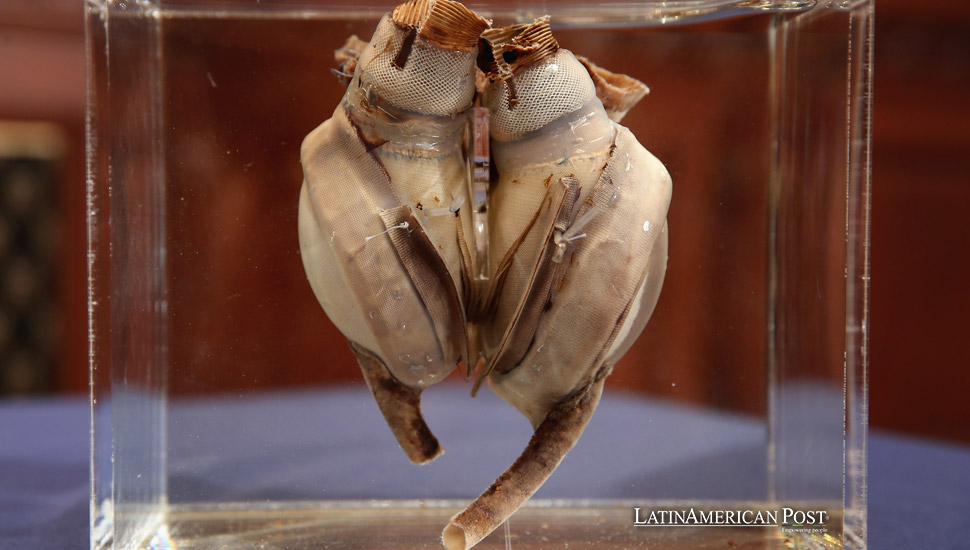Latin American Inventions That Changed the World Forever

Latin American inventors have made groundbreaking contributions to medicine, technology, and entertainment. These nine inventions have reshaped the world, from the artificial heart to color television. Learn more about these remarkable innovations.
The Life-Saving Artificial Heart
Latin America has long been a hub for creativity and innovation, but many of its contributions have gone unrecognized globally. The region’s inventors have created some of our time’s most important technological, medical, and entertainment advancements. These innovators not only transformed their own countries but also made a lasting impact on the world.
BuzzFeed listed nine Latin American inventions that have shaped our modern lives in ways most don’t even realize. From the artificial heart to color television, these breakthroughs demonstrate the immense talent and creativity of Latin inventors who have changed the course of history.
The artificial heart, developed by Dr. Domingo Santo Liotta from Argentina, is at the top of the list of Latin American innovations that changed the world. Born in 1924, Dr. Liotta was a trailblazing surgeon who 1958 developed the first total artificial heart prototype in Córdoba, Argentina. This early device was successfully tested on animals and laid the groundwork for future medical advancements. In 1961, Dr. Liotta was recruited by Baylor College of Medicine in Houston, Texas, where his innovation would soon make history.
On April 4, 1969, Dr. Denton A. Cooley used Liotta’s artificial heart in the world’s first total artificial heart implant. The procedure, performed on a 47-year-old patient suffering from severe heart failure, allowed the patient to survive for 64 hours until a donor heart became available. Although the patient passed away from a pulmonary infection 32 hours after the second transplant, the groundbreaking surgery marked the start of a new era in cardiac care. Known as “bridging,” the use of an artificial heart to keep patients alive until a donor organ becomes available has since saved countless lives.
Dr. Liotta’s contribution to medicine is so significant that his artificial heart is now on display at the Smithsonian National Museum of American History, a testament to its global impact.
Color Television: A Mexican Breakthrough for Global Entertainment
Imagine a world without color television. It’s hard to picture in today’s vibrant, fast-moving entertainment landscape, but this technology owes its existence to a young Mexican engineer. In 1940, Guillermo González Camarena, just 23 years old, secured the world’s first patent for color television. His invention, a chromoscopic adapter for cameras, enabled them to transmit color images even though they could only capture black-and-white footage at the time.
González Camarena’s breakthrough transformed the entertainment industry, bringing vivid colors to screens worldwide. While color television is now synonymous with entertainment, González Camarena envisioned broader applications for his technology. He hand-built camera equipment for Latin America’s first television station and pioneered tele-education programs to train medical students. NASA even used his technology to transmit images from Jupiter in 1979, underscoring its importance to scientific exploration.
González Camarena’s contributions have not only changed the way we experience television but also pushed the boundaries of how technology can be used for education and space exploration.
Latin American Ingenuity at Work
Latin American inventors have played a pivotal role in advancing medicine and technology, with innovations that continue to benefit millions worldwide. One such innovation is the oral contraceptive pill, which transformed family planning and women’s health. Mexican chemist Luis Ernesto Miramontes Cárdenas and his colleagues Carl Djerassi and George Rosenkranz synthesized the first oral contraceptive in 1951. This invention has become the most widely used form of birth control in the world, empowering women to take control of their reproductive health.
Miramontes’ contribution to chemistry and medicine earned him recognition as a Top Chemical Engineer of All Time by the Institution of Chemical Engineers in 2011. His work continues to be celebrated as a milestone in medical science.
Another key figure in Latin American innovation is Uruguayan biochemist Alejandro Zaffaroni, who developed the transdermal patch, a technology revolutionizing drug delivery. His invention, initially designed to provide relief from motion sickness, led to over 40 FDA-approved patches for conditions ranging from birth control to nicotine addiction. Zaffaroni’s contributions were recognized in 1995 when he received the National Medal of Technology and Innovation in the Medicine category, further solidifying his legacy as a leader in biotechnology.
Argentine doctor Julio Palmaz made waves in cardiology with his development of the balloon-expandable stent. The Palmaz Stent, patented in 1988, has become a vital tool in treating coronary artery disease, saving millions of lives. Palmaz’s work revolutionized artery repair and remains a critical medical innovation today.
Latin Inventors and Global Progress
Latin American inventors have also made significant strides in addressing global challenges. One example is María Alexandra Tamayo from Colombia, who developed the NanoPro Water Purification System. Using nanotechnology, this filtration device removes bacteria, viruses, and fungi from water without altering its taste or smell. Tamayo’s invention is precious for rural communities in Colombia that struggle to access clean drinking water. Her work earned her recognition as one of MIT’s Innovators Under 35 in 2019, marking her a rising star in global innovation.
In addition to solving modern-day problems, Latin American inventors have played a critical role in natural disaster preparedness. Chilean engineer Arturo Arias Suárez developed the Arias Intensity Scale, one of the first systems for measuring seismic activity. His work laid the foundation for earthquake engineering, leading to new building safety standards successfully tested in some of the world’s most earthquake-prone regions, including Chile.
Latin America’s contributions to medicine and technology also extend to neonatal care. Peruvian inventor Claudio Castillón Lévano created the neonatal artificial bubble, a non-invasive device to improve outcomes for high-risk newborns. His work has saved countless infant lives and continues to be used in hospitals worldwide.
Also read: Google’s Gemini Live Expands to Voice Chat in Spanish
Finally, one of the most surprising Latin American innovators is Brazilian priest Roberto Landell de Moura, who developed a wireless telecommunication system in the early 1900s. His inventions laid the groundwork for modern cell phones and wireless communication, proving that groundbreaking innovations can come from unexpected places.




